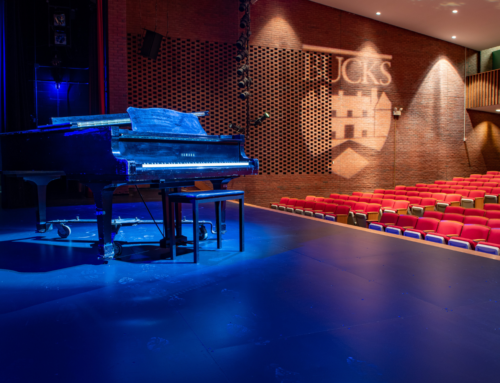This article was written by Jeffrey G. Trauger, the owner of a farm in Upper Bucks County that dates back eight generations to his ancestors' purchase in 1798. Jeffrey currently works as an attorney in Perkasie at www.grimlaw.com.
After a local attorney recently learned that I lived on a farm, he asked if I would be interested in writing an article about my life as a “gentleman farmer” for a local Bucks County Bar Association publication. While many would question whether I meet the definition of a “gentleman,” I am absolutely certain that I do not meet the IRS definition of a “farmer.” However, that was not the case on both sides of my family just two generations ago, so let me tell you the tale of one country lawyer’s family farm and heritage.
The Trauger (Dracker in Germany) and Hunsberger ( Hunsperger in Swizterland ) families both managed to make their way across the Atlantic to Upper Bucks County in the early to mid-1700’s. Both families likely came here as a result of Pennsylvania’s efforts to actively recruit farmers from Europe to come here and help grow and expand the Commonwealth’s fledgling agrarian economy. Our family farm, which is now my home and residence, was originally acquired by my mother’s side of the family in 1798 for the stated deed sum of “1000 pounds.” In 2001, my family and I moved to the farm in Plumstead Township and became the 8th generation to reside following only the 5th deed transfer over that period.
The current house on our farm was built with brick in 1888 and replaced the original fieldstone residence. (I am told brick was a status symbol at that time.) According to my grandfather’s records, the brick was made at a local brickworks in Doylestown and delivered by many horse and wagon trips to our property, which is 5 miles north in Plumstead. The masons who built the house were from the Souderton area, and they would travel each week to work on the farmhouse while sleeping weeknights in the barn, which was built earlier in 1873. They then returned home by horse for the weekend with their families. The farmhouse, like many built at that time, was a multigenerational housing structure housing 2 generations of family members that lived and worked together on the farm. Over the years, the barn also had several additions. Barn experts can tell the nationalities of the early farmers of Bucks County just by looking at the individual barns and the manner of construction. Experts identify ours a Germanic bank barn with hand hewn timber framing techniques and construction design unique to southern Germany.
Regarding “good deeds,” when our family moved back to the farm, my grandmother handed me a box that she kept in her safe. In it were most of the original deeds to the property including those that predated 1798. After doing some research, I learned that in the pre-recording era, when a property was transferred, the grantor would provide all deeds to the grantee who would retain those deeds thereby proving their ownership through the chain of title. Some of those original deeds were done on sheepskin with red wax seals accompanying the grantor’s signatures and were also signed and witnessed by the local justice. Two of these deeds, 1774 and 1776 were particularly beautiful due to the artistry of the scriveners with nothing more than black ink. I had them framed and placed under protective glass, and they are now on display in our farmhouse. The deeds show that my ancestors were neighbors to the Doan family, infamous Bucks County outlaws. For those that do not know, the Doans were Tories and horse thieves; their largest heist was a robbery of the gold from the Bucks County treasury.
From 1909 through 1959 the farm operation was focused on the breeding of Holstein – Freisians ( the black and white cows for you town dwellers ). While my great grandfather, Harvey Hunsberger, was attending to various outside interests (Eastern States feed dealer and Sheriff of Bucks County) my grandfather, George, worked on the farm with his older brother, Willis and helped develop the herd , dairy, and breeding businesses. The farm became known as Belle Crest farm, and this name served as the prefix for all cows and bulls bred and sold throughout the country as the breeders registered their animals with the National Association. Belle Crest farm also bred a number of state champion cows that produced many more pounds of milk with a higher butterfat content than their contemporaries. A 1941 article from the Intelligencer was titled “Belle Crest Farm Cows Sold At Fancy Prices “and confirmed the sale of a hers sire bull named “Dean of the Pearls” for the then record sum of $2,100. The Belle Crest breeding business ended however with the advent of (AI not “intelligence” but instead “insemination”). During this time period, my grandfather also had a huckster route to the Main Line and other areas – selling farm fresh milk, meats, and other dairy products to the city and town folk.
While both of my grandfathers grew up working on their family farms, my parents’ generation left farming as their livelihoods. Belle Crest farm is now farmed by a local dairy farmer in Bedminster who raises feed crops of primarily corn and soybeans to reduce his winter feed costs for his herd of approximately 80 -100 dairy cows. As a boy, I was fortunate to grow up next to the farm and spend much time there climbing the silo, building tunnels in the hay stored in the barn, and hunting in the adjacent woods with my father. I may be one of the few BCBA members that has driven a large tractor pulling a disc harrow to prepare a field for planting, driven a smaller tractor raking dried hay for later bailing, or has ridden along in the cab of a combine while harvesting soybeans or corn. Another fact, both my mother and myself have only ever had Thanksgiving dinner at the farm. Thanks to my wife Colleen, that tradition has continued, and hopefully it will continue long into the future.
There is nothing quite like the peace and solitude of the farm, especially on a moonlit night or a snowy day. I enjoy the seasonal smells of freshly tilled soil and watching the crops grow following planting. Harvest time in the fall is also a yearly event that marks the passing of time and the seasons at our farm. The open spaces, which are preserved thanks to the Bucks County Agricultural Land Preservation Program are home to deer, turkey, fox, hawks, and other of God’s creatures that we frequently observe at dusk and dawn. As you may be able to tell, I am proud of our families’ Bucks County farming heritage, and it now falls to me and my family to uphold the tradition of being good stewards of the land and our family homestead.
In closing I only ask that you please support our local farmers by buying their products directly, and remember, in Bucks County: “There’s No Culture Like Agriculture.”
We Are Supported By:





Join Our Community. Click here to learn more










